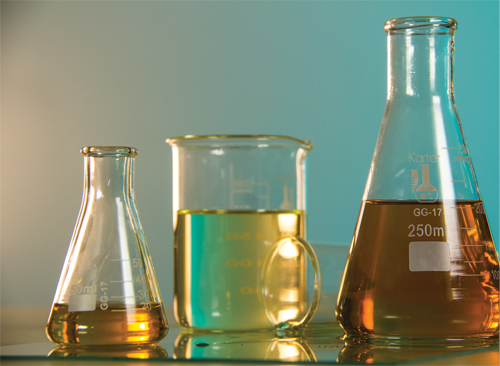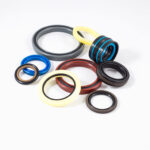Last month, we discussed how vital an oil analysis program is for the reliability of your hydraulically powered machinery. This article is the second in the series where I discuss the many important qualities a competent oil analysis lab can identify for you. Oil viscosity is a primary driver in the oil selection process and is often the only criterion for the untrained professional. Your lab will test your oil sample to confirm what you’re using not only matches the bucket’s label but also that it hasn’t degraded since the original purchase.

Oil viscosity refers to measuring a fluid’s resistance to flow, essentially determining how thick or thin the oil is as it moves. It is a crucial property in hydraulic systems due to its direct impact on system performance and efficiency. Viscosity affects various aspects of hydraulic operations, including the speed and efficiency of fluid flow, lubrication of moving parts, and the overall effectiveness of hydraulic seals and valves to perform well.
Choosing the correct viscosity grade is essential, as it ensures optimal performance under specific operating conditions, especially with variations in temperature and inefficiency. Too high viscosity can lead to increased pumping forces, reduced flow rates, and potential damage to components due to inadequate lubrication. At the same time, too low viscosity may result in fluid leakage, reduced efficiency, and compromised system responsiveness.
Some labs will also test for viscosity index, which in some cases could be more important than absolute viscosity. Hitting a single viscosity rating is relatively easy, as the manufacturer simply takes a bulk volume of base oil already close to the desired viscosity. Then, with additives, blending, testing and adjustments, they can achieve their desired single-temperature viscosity.
However, the AW rating measures oil at only 40°C (104°F) and provides no clues as to performance at any other temperature. To give users an idea of viscosity stability over a wide range of temperatures, labs will heat the oil to 100°C (212°C) and test the viscosity again. Running the two viscosity results through some easy math results in a viscosity index that shows how well the oil maintains its viscosity despite increased heat load. A poor oil will have a VI under 90, while great oils can expect a result of 160 or higher (higher is better).
Viscosity Index is still only a partial indicator of overall oil viscosity stability. Although any oil with excellent VI must be based on synthetic base stock (in most cases), we must also consider how well an oil will perform in conditions outside hot and hotter. The world is filled with cold weather-capable machinery that needs oil to perform at or below-freezing temperatures, so other metrics must be tested. If you run all-weather machinery, perhaps have your lab also test the pour point, the lowest temperature at which oil will still pour.
In many cases, a high-quality synthetic oil will perform well at low temperatures, but specialized oils designed for arctic conditions are fairly thin, even below freezing. There is no magical one-viscosity-fits-all solution to oil, so you must know your application and what it asks of your oil. A snow groomer may never need a high VI oil stable at 100°C, but a snow plow may perform dual duty as a simple dump truck in the summer.
As you can see, viscosity is an essential quality of your hydraulic oil. Hydraulic oil’s viscosity can change over time through degradation, oxidation or water contamination. Asking your lab to confirm viscosity is the absolute minimum test, but also knowing your application well enough to see if you should consider viscosity index and pour point as part of your regular oil analysis program.





Leave a Reply